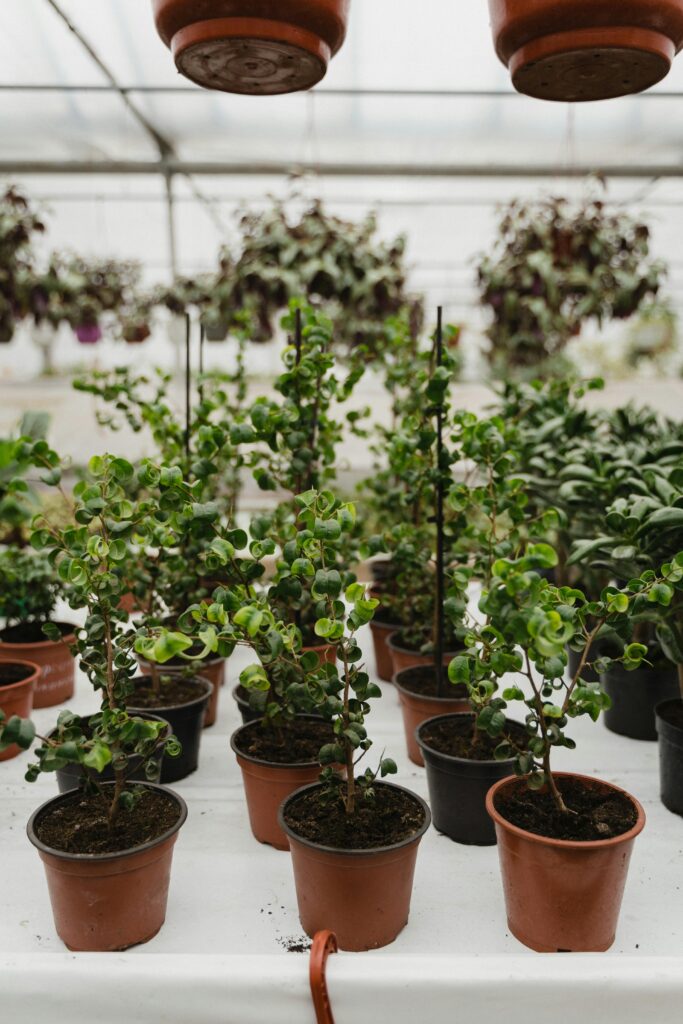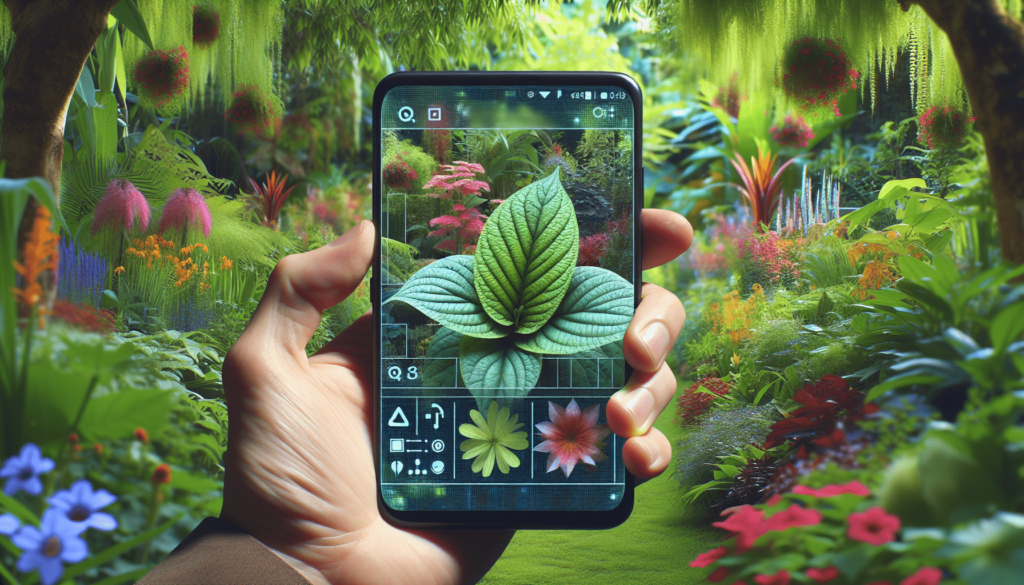Have you ever found yourself marveling at a beautiful plant during a walk, only to realize you have no idea what it is? It happens to the best of us. Thankfully, we’re living in a time where technology can help bridge this gap between our curiosity and knowledge. Plant identification apps have become the saviors for many nature enthusiasts, offering instant information at your fingertips. In this article, we’ll walk you through six of the best plant identification apps available on Android, helping you connect more deeply with the natural world around you.

Why Use Plant Identification Apps?
Before diving into specific apps, it’s essential to understand why you might want to use them. These apps don’t just identify plants; they offer valuable information about care tips, potential uses, and even the ecological significance of specific species. If you’re looking to start a garden, educate yourself, or just satisfy your curiosity, plant identification apps are indispensable tools.
Top 6 Plant Identification Apps for Android
1. PlantSnap
PlantSnap is a powerhouse in plant identification. With an impressive database boasting over 625,000 plant species, this app makes it ridiculously easy to snap a picture and get immediate results. It’s particularly handy if you’re into gardening or landscaping, as it offers detailed care instructions for each plant.
Features
- Database Coverage: Over 625,000 species.
- Identification Speed: Offers instant identification.
- Care Instructions: Provides tips for plant care and maintenance.
- Community Engagement: Join a global community of plant enthusiasts.
Pros and Cons
| Pros | Cons |
|---|---|
| Extensive database | Premium features are behind a paywall |
| User-friendly interface | Requires internet for best results |
| Detailed care instructions | Ads in the free version |
2. PictureThis
PictureThis is known for its high accuracy and user-friendly interface. The app doesn’t just stop at identification; it delves into plant care, and even gives suggestions on how to treat plant diseases. It’s perfect for both beginners and seasoned botanists.
Features
- User Interface: Clean and intuitive.
- Accuracy: High accuracy with identification.
- Additional Info: Treatment options for plant diseases and pests.
- Offline Mode: Can be used without internet connection.
Pros and Cons
| Pros | Cons |
|---|---|
| High accuracy | Monthly subscription for premium features |
| Clean interface | Limited features in free version |
| Offline usage | Occasional incorrect identifications |
3. PlantNet
PlantNet is a community-driven app, which means it gets smarter with every photo uploaded by users. This makes it incredibly robust and reliable over time. Researchers and scientists also back the app, ensuring high-quality information.
Features
- Community-Driven: Constantly updated and enhanced by users.
- Scientific Backing: Supported by research institutions.
- Flora Databases: Regional databases for more accurate identifications.
- Data Sharing: You can share your discoveries with the community.
Pros and Cons
| Pros | Cons |
|---|---|
| Community-enhanced | Requires internet |
| Very accurate | User interface could be improved |
| Supported by scientists | Can be slow to process at times |
4. LeafSnap
LeafSnap is particularly focused on identifying tree species by their leaves. It is a bit limited in scope compared to some of the other apps but makes up for it with its high accuracy in its specific niche.
Features
- Leaf Identification: Specializes in tree leaves.
- High Accuracy: Uses advanced algorithms for identification.
- Visual Guides: Leaf photographs for easier comparison.
- Educational: Introduces users to numerous tree species.
Pros and Cons
| Pros | Cons |
|---|---|
| Highly specialized | Limited to tree leaves |
| High accuracy | Needs internet |
| Visual aids | Fewer additional features |
5. iNaturalist
iNaturalist stands out because it’s not just a plant identification tool—it’s a collaboration between scientists and naturalists worldwide. It’s perfect for those who want to contribute to citizen science while learning more about plants.
Features
- Collaborative: Community of scientists and naturalists.
- Multi-purpose: Also identifies animals and fungi.
- Data Collection: Contributes to global research.
- Explore Nearby: Discover local biodiversity.
Pros and Cons
| Pros | Cons |
|---|---|
| Collaborative effort | Requires internet |
| Multi-purpose | Can be overwhelming for new users |
| Contributes to science | Less focus on plant-specific features |
6. Flora Incognita
Flora Incognita is the result of a research project aiming to automatically identify wild plants using image recognition. It’s particularly valuable for hiking enthusiasts and those interested in indigenous plant life.
Features
- Research-driven: Developed as part of a scholarly project.
- Wild Plants Focus: Specializes in indigenous flora.
- Regular Updates: Constantly evolving with new data.
- User Friendly: Easy-to-use interface.
Pros and Cons
| Pros | Cons |
|---|---|
| Research-based accuracy | Not as comprehensive as some apps |
| Focus on wild plants | Needs internet connection |
| Easy to use | Limited to certain geographical regions |

How to Choose the Best App for You
The best plant identification app for you largely depends on your needs and preferences. Here are some factors to consider:
Usability
Make sure the app is user-friendly and intuitive, especially if you’re not very tech-savvy. Some apps offer streamlined interfaces and guides to make the identification process easier.
Scope and Database
If you’re interested in a wide variety of plants, opt for an app with a robust database. However, if your focus is on a specific category, such as trees or garden plants, a specialized app might be more beneficial.
Additional Features
Look for apps that offer more than just plant identification. Care tips, disease treatment advice, regional guides, and community interactions can add immense value.
Connectivity
While most high-accuracy apps require an internet connection, some offer offline modes for those who may not always have access to the web.
Cost
Many apps offer free versions with limited features, and premium versions that unlock additional benefits. Decide what’s most important to you before committing to a subscription.

Practical Tips for Using Plant Identification Apps
Take Clear Photos
A blurry or poorly lit photo can lead to incorrect identification. Make sure you take clear, well-lit pictures focusing on key features like leaves, flowers, or bark.
Utilize Multiple Angles
Sometimes one angle isn’t enough to get an accurate ID. Take photos from different perspectives to give the app more information to work with.
Engage with the Community
Many apps offer community features where you can share your guesses or confirm the identifications of others. This can enhance your learning experience and help you connect with fellow plant enthusiasts.
Regular Updates
Keep your apps updated to ensure you’re benefiting from the latest features and most accurate information. Many of these apps are continuously improved and updated by developers and user communities.

Conclusion
Plant identification apps are a fantastic tool for anyone looking to deepen their connection with the natural world. Whether you’re an avid gardener, a casual hiker, or someone curious about the flora in your daily environment, these apps provide a wealth of information at your fingertips.
From the extensive database of PlantSnap to the community-driven nature of PlantNet, there’s an app out there tailored to meet your needs. Utilize these tools to not only identify but also learn about and care for the plant species around you. This knowledge can enrich your outdoor experiences, contribute to your gardening success, and allow you to appreciate the incredible diversity of plant life on our planet. Happy identifying!

